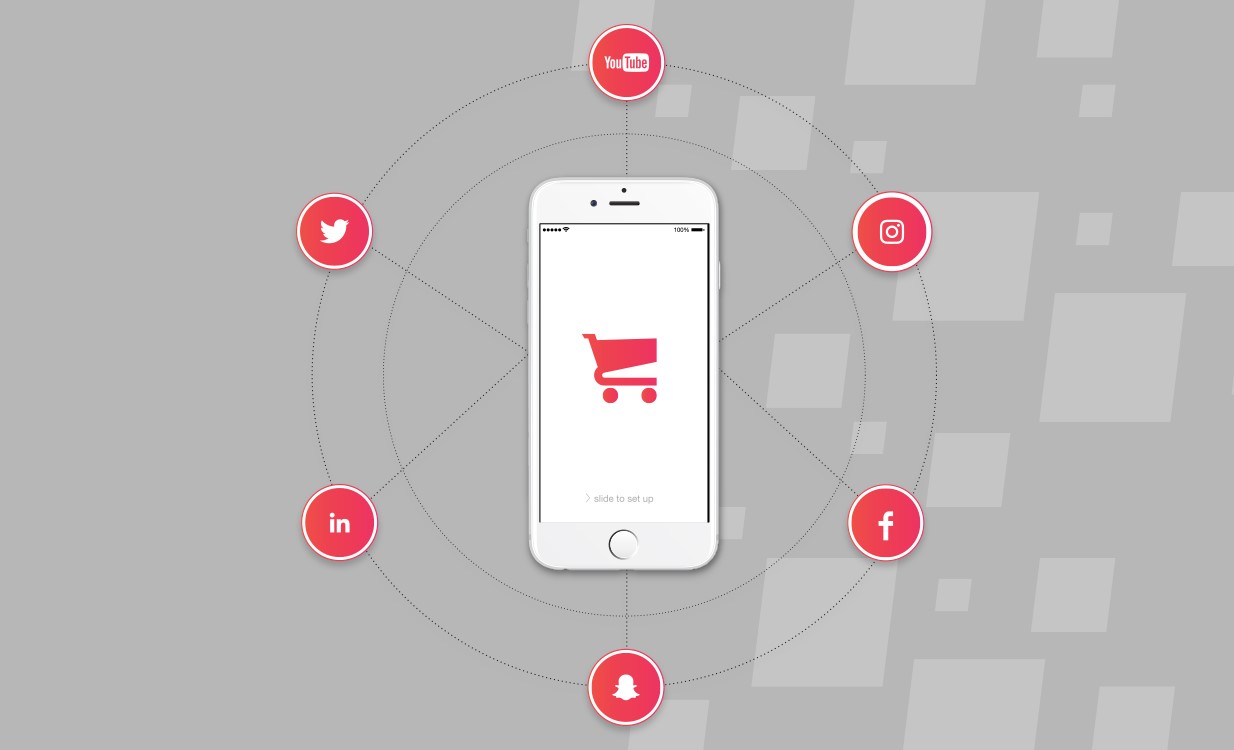The new rules of social commerce have arrived. Social channels are no longer a place where consumers simply look for deals and get to know your brand. They’re going social to shop. A 2015 Business Insider study found that social channels were the fastest-growing online shopping destination from a revenue-generation perspective. It’s time to get moving on social commerce, and following these five success factors will help you get ahead of the competition:
1. Quick log-ins
Today’s shoppers are fed up with lengthy registration processes that keep them from browsing and buying from ecommerce sites. That’s why you need to include the option for visitors to sign into your site using their Facebook or Google+ information. It streamlines the user experience and allows shoppers to dive right into your inventory.
The Facebook Login for Magento extension is available to give your ecommerce site a critical advantage. Furthermore, integrating data from consumer social channels – such as details about what products they’ve liked or even purchased in the past – into your ecommerce platform’s backend lets you offer targeted promotions or organize how products are displayed in the interface based on past preferences.

2. Buy-now opportunities
EMarketer has called this area the “next step in social commerce” and for good reason: Buy-now buttons are an essential addition to your ecommerce arsenal, giving you a major competitive edge. In fact, research shows that more than half of ecommerce brands have no direct buy button option, presenting you with a serious opportunity to stand out.
Facebook remains the king of the buy-now experience, according to the news source, but Twitter, Instagram and Pinterest are quickly catching up. In fact, Pinterest already has buyable Pin functionality, allowing users to move directly from a casual visit to a friend’s board to a purchasing opportunity. Check in with your ecommerce development partner to begin your integration process ASAP.
3. Reviews and ratings
Nothing boosts the reputability of your brand, products and services like word of mouth, and you need to make this dynamic work in your favor to master the new basics of social commerce. Tools such as Yotpo allow your social media followers to offer ratings and reviews, giving you a marketing boost that can’t be matched by conventional methods.
You can also use data mining to identify when your company is mentioned online. This knowledge will reveal how people are discussing your organization online, making it easier to track conversations happening around your ads and identify which initiatives are most successful.
Building business intelligence functionality into the backend of your electronic and social commerce dashboards allows users to view all of this data and take action on it without having to step out into an alternative app or service.
Shopping experiences must be built around social media users.
4.Precise retargeting
Between Twitter, Facebook news feeds, Snapchat and Instagram, you have countless opportunities to retarget content and promotions to a more social audience. Use tools such as Buffer to schedule posts and tweets and make the most of your retargeting budget.
An article from Social Media Examiner explained that you can draw retargeting information from your followers, email list subscribers and website visitors to build receptive audiences. You can even retarget to “lookalike audiences” that display similar characteristics to your ideal demographic. Like any aspect of digital marketing, the more data you gather, the more effective your efforts will be.
5. Seamless Transitions
Engaging omni-channel shoppers hinges on providing smooth transitions from one experience to another. A Think With Google report explained that consumers shopping on digital channels often use that experience to inform or deepen their in-store purchasing efforts. Creating one digital experience that flows naturally between web, social and brick-and-mortar channels is critical in smoothing transitions for omni-channel customers. A few ways to accomplish this goal include:
- Maintaining a common visual brand identity across all channels.
- Employing responsive design so that sites display equally well regardless of the device used.
- Taking advantage of QR codes and similar technologies that allow individuals shopping in physical stores to interact with you through digital means.
- Getting creative with promotions and events that encourage shoppers in the store to share what they are doing on social media.
- Using consumer location data from social sites to send consumers targeted promotions or event invitations to encourage them to enter the store.
These types of strategies allow you to create a truly omni-channel experience by blending in-store and digital experiences.
Empowering social shoppers
We recently helped footwear and apparel retailer K-Swiss optimize its online shopping experience alongside a rollout of new brick-and-mortar stores. This process included creating a responsive web experience that used image-focused, minimalist design to establish intuitive interfaces on both typical web and mobile channels. We also integrated with SAP databases and enterprise resource management systems in the background so K-Swiss could easily bring data to bear in improving customer experiences.
This omni-channel approach that uses social experiences as the centerpiece to allow consumers to shop however they want and still have a positive experience isn’t a future pipe dream. It can be a reality now when design and development best practices are brought together around social commerce best practices.
Is your site mastering the basics of social commerce? Let’s discuss!



